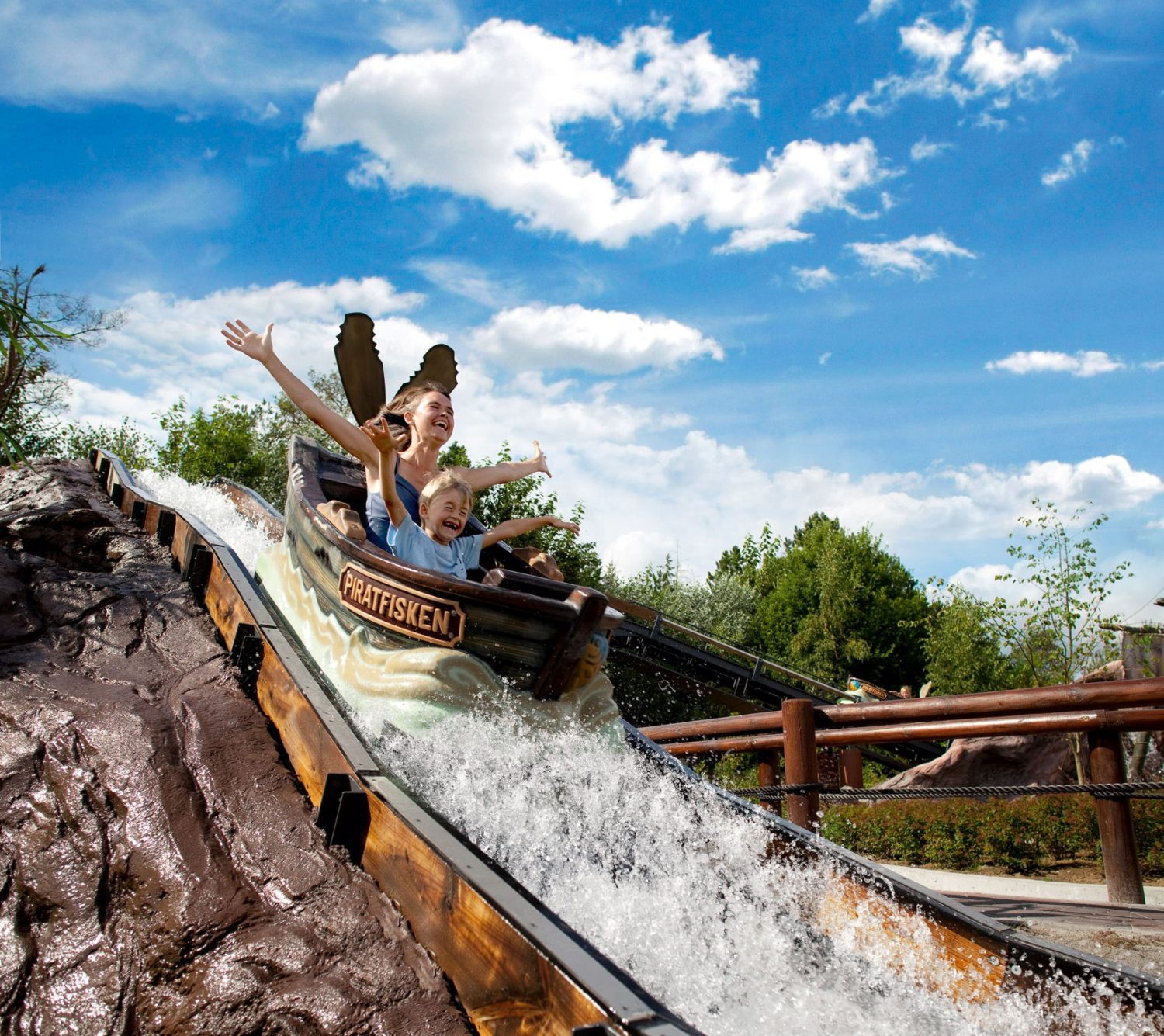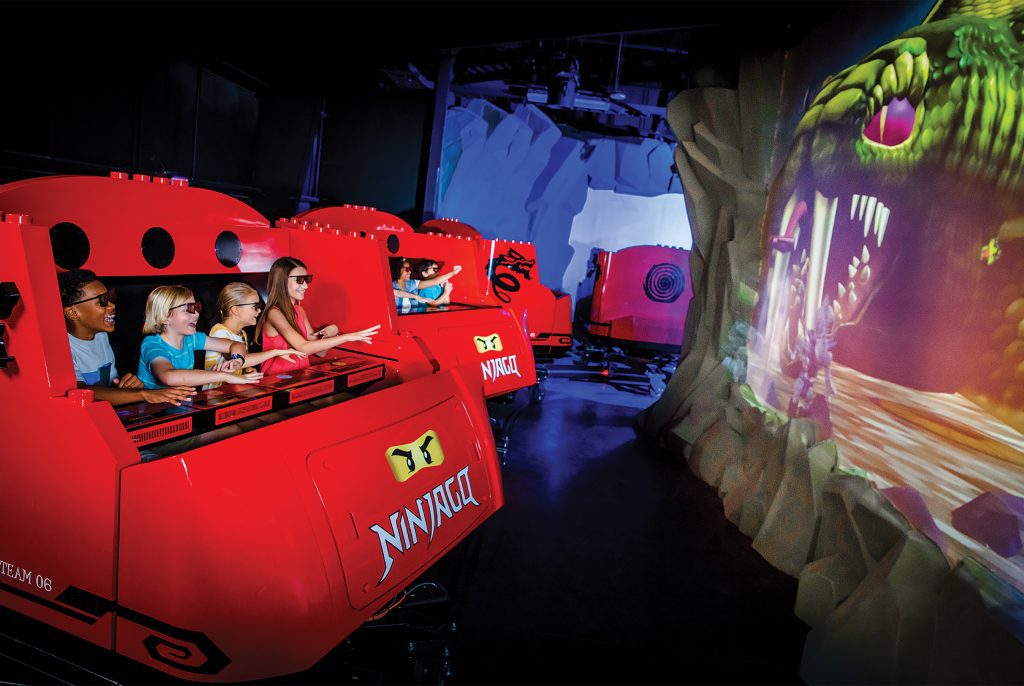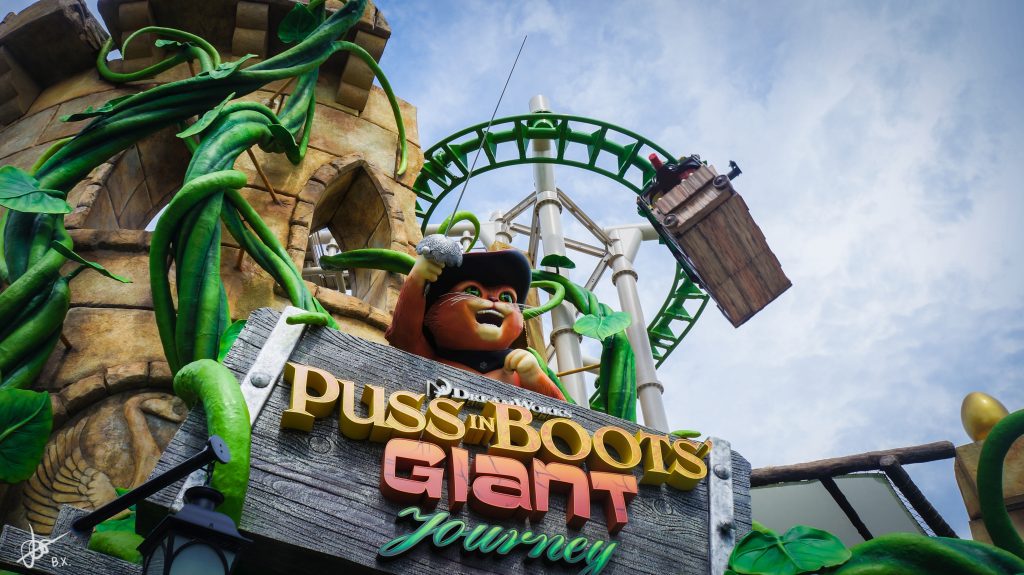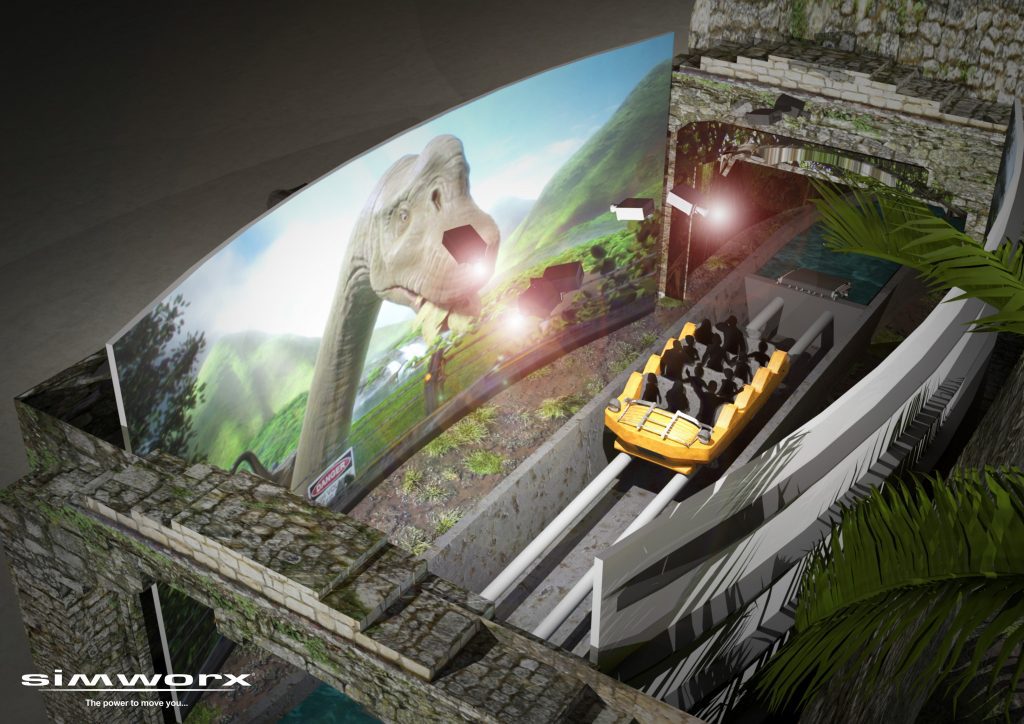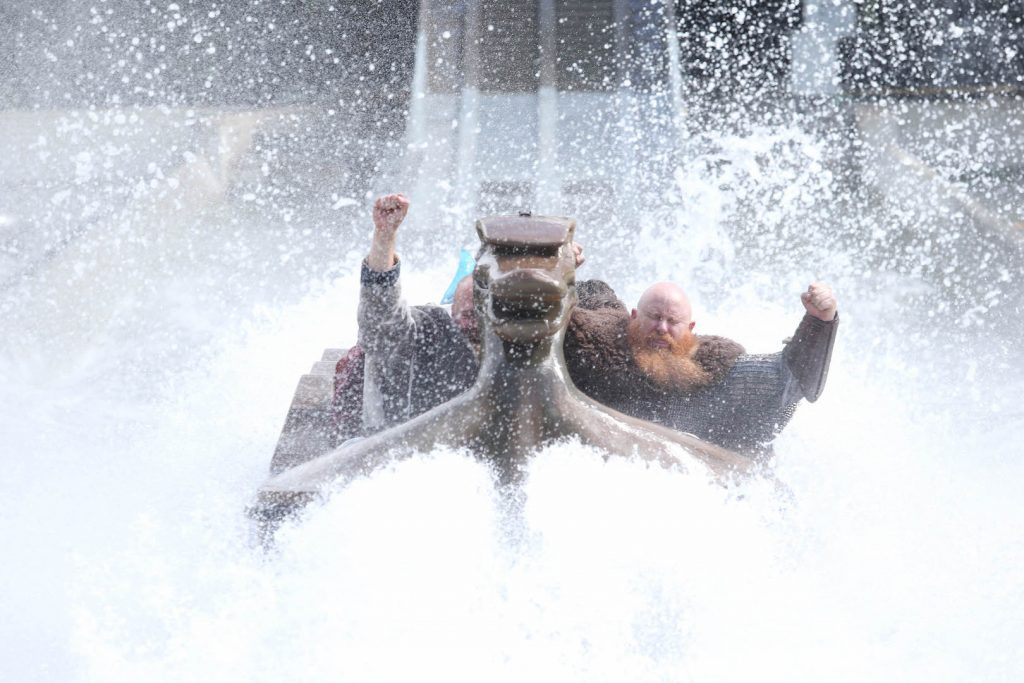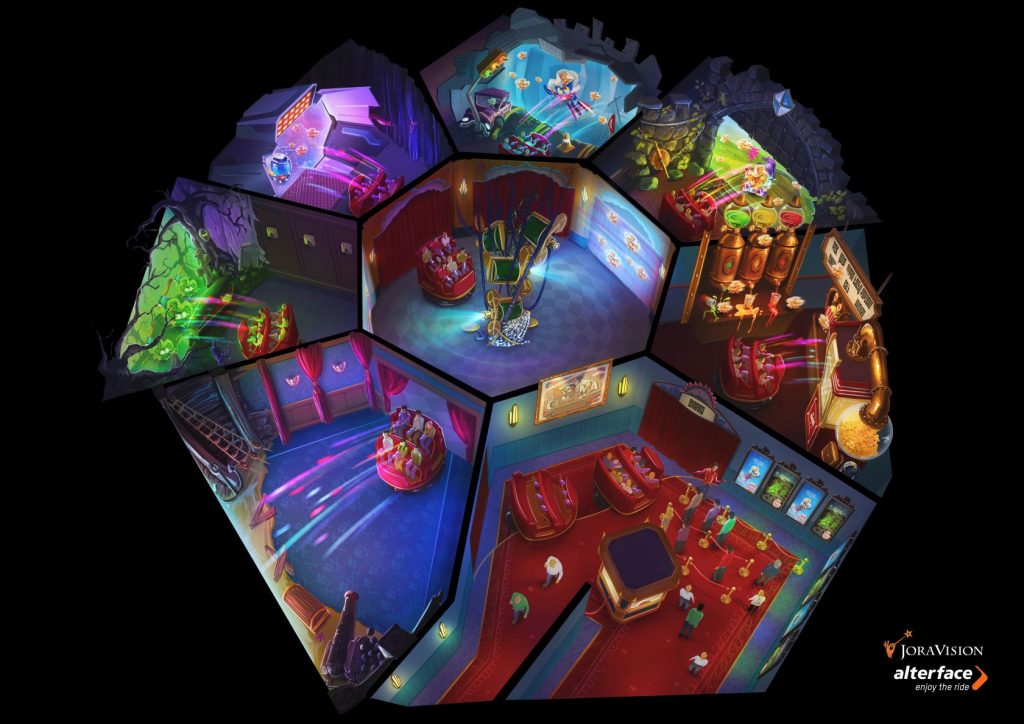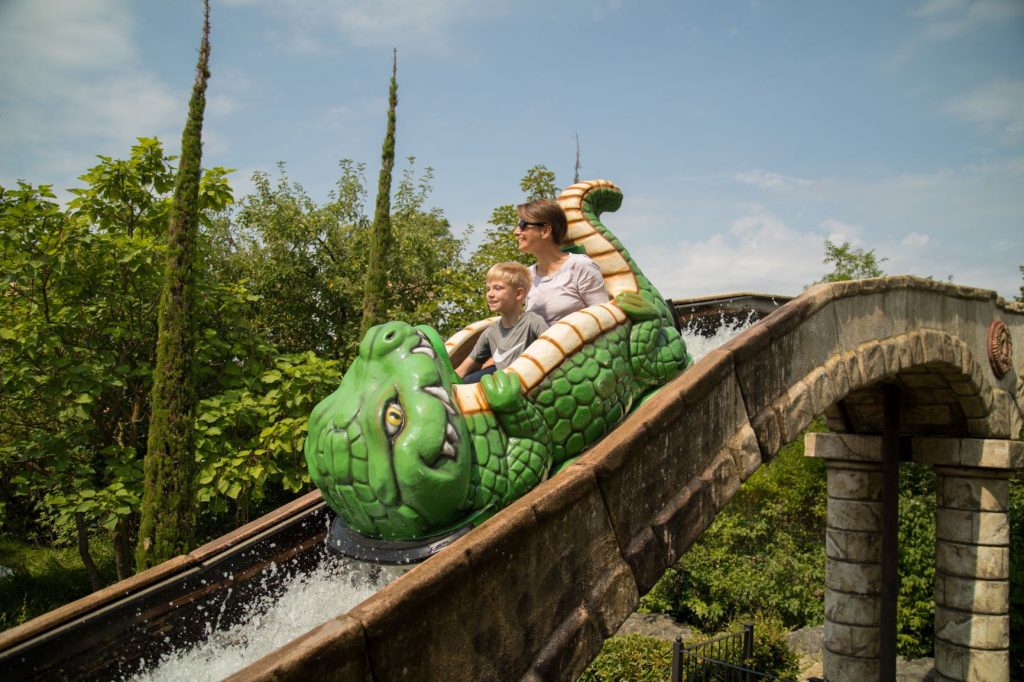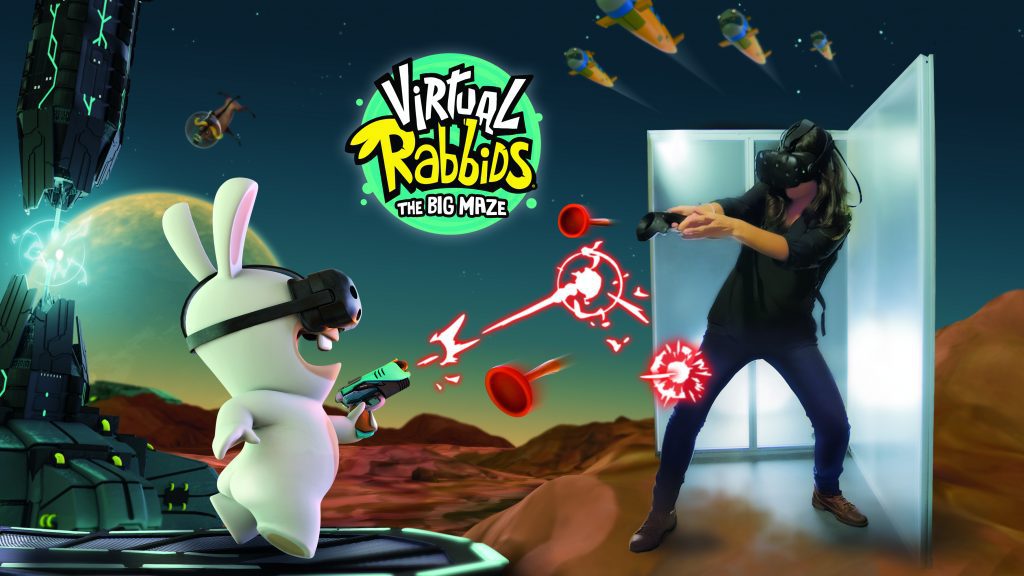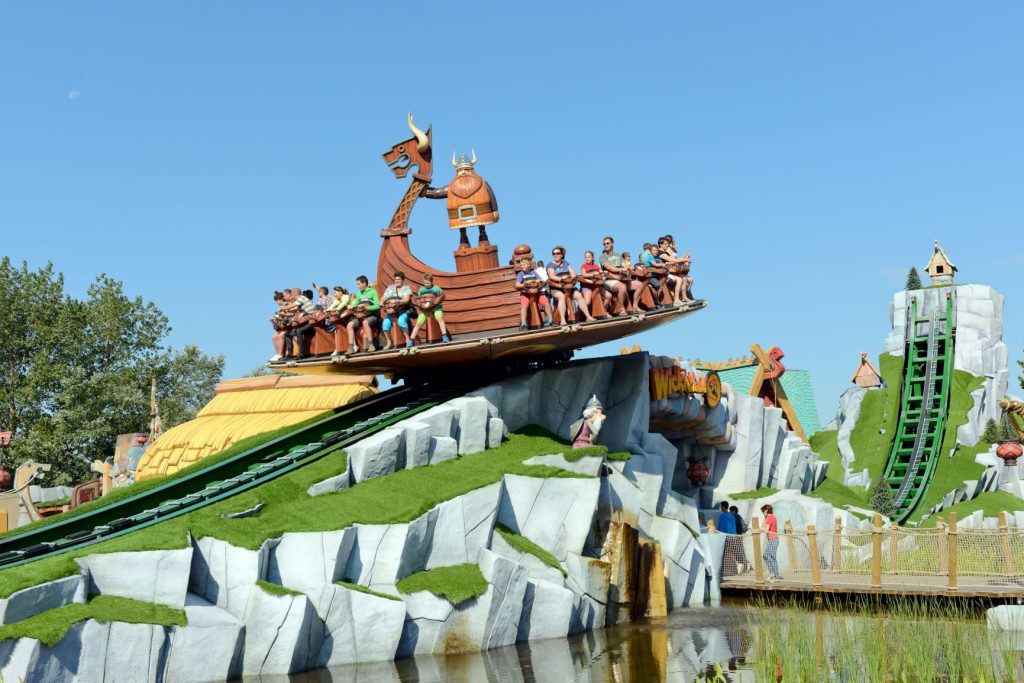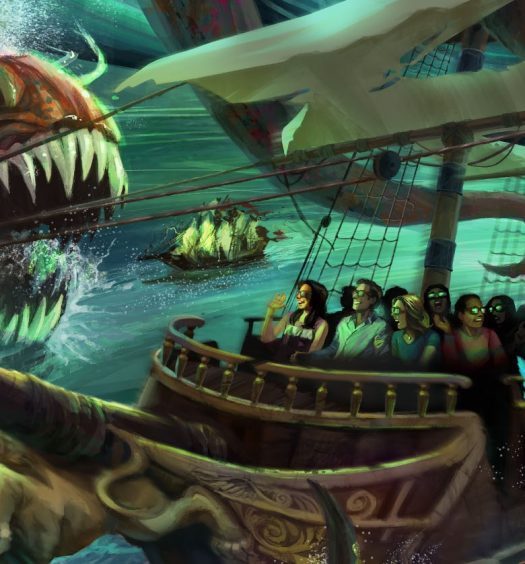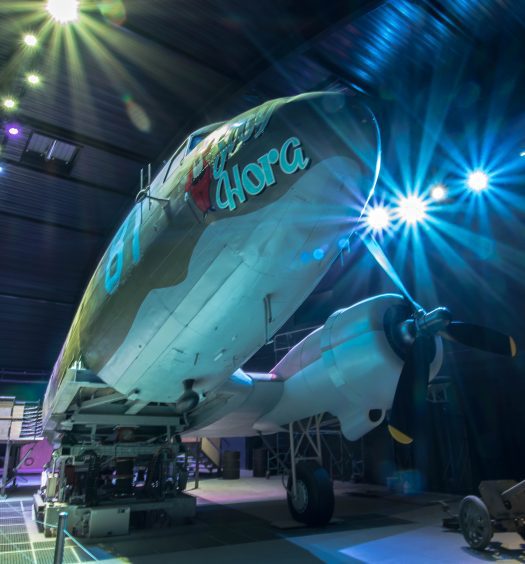Beth Whittaker looks at trends emerging within the family rides sector and how embracing technology is a must
THE thrill of going to an amusement park or FEC (as the name would imply) is something experienced by many as part of a family day out. Therefore, it makes sense for these locations to have a strong family offering and while there are thrill rides that are more suited to the daredevils, along with rides catered to small children, those rides and games that can cater for a family as a whole – meaning no one is left behind, stood holding all the bags and coats – can have real benefits to parks.
Three current trends that should be a key focus for operators when choosing their family rides and games have been identified within the family sector: make the most of technology; incorporate interactivity and multi-media; and theming – and all of them are contributing to a continued global growth of the family rides sector. As such there have been numerous product launches for operators to choose from, as the following companies outline.
Canadian manufacturer Triotech introduced its new VR Maze at the IAAPA Attractions Expo in Orlando in November last year, which uses virtual reality and combines complete immersion and interactivity by taking the players into an engaging and virtual adventure. For Triotech’s Christian Martin, it is key to incorporate these elements into family offerings, as he explained to InterPark.
“Attractions based on technology are in high demand for two reasons. Firstly, content can be updated in order to easily refresh or rebrand an attraction and secondly, the guests demand technology-based attractions, because technology is in their everyday life. Interactivity is expected, as is a high degree of immersion. This is particularly key in bringing guests back for repeat visits. Media-based attractions have made family rides more immersive and interactive, and elements such as scoring, are highly rated by families because it crystalises their experience.”
Triotech’s VR Maze is fully modular, meaning it can fit in practically any space from 10sq.m upwards. At the cornerstone of the content offer comes an alliance with video game global powerhouse Ubisoft – its Rabbids IP is already available to the market and the next release will be Assassin’s Creed.
“Hi-tech ride features such as VR or multi-media applications make the ride more engaging and fascinating, allowing operators to create real immersive attractions where families can really have a fantastic experience together,” adds Martin.
Zamperla is another supplier that also launched a number of new products for the family sector at November’s IAAPA trade show, including the Cosmojet and Su&Zo; WindstarZ theming, which includes a new VR addition; and VR Box, a six dimensional, suspended simulator specifically conceived for small parks and indoor FECs – enabling operators to offer their customers a ‘big coaster’ experience when they don’t have the space or budget to do the real thing.
“As well as the three new products, we also launched a new business division of the company during IAAPA called Z+,” said Zamperla’s Marco Mazzucchi, “a brand born with the aim of creating new experiences through the use of the latest hi-tech developments applied to rides. For many years Zamperla has invested in research and development and as such we established a dedicated department in order to work on this with the right focus.
“There is a global market trend at the moment; after many years of huge coasters, parks are realising that having big family themed areas are important too. We’re a global player in the industry and this is something we’ve seen all over.
“For sure the Far East is still one of the stronger markets in terms of growth and new projects and openings, but generally speaking the demand coming from this part of the world is for big coasters and thrill rides, with the bigger players then also buying the family and kiddie rides.”
Having also seen a continued growth in sales over the past 18 months, UK-based Simworx has worked to accommodate this shift and as part of that recently introduced three new products – the Immersive Adventurer; the Mini Flying Theatre; and Paradrop VR, all of which, either make use of VR technology or create an immersive experience for guests.
“We have seen continued growth in the global market for several years now and although Asia (and in particular China) has witnessed unprecedented investment in the theme park industry in that time, other areas such as the Middle East have also seen the completion and opening of many new theme parks and leisure based venues and continue to do so,” managing director Terry Monkton told InterPark. “We have always sold products to a wide range of venues and this hasn’t changed – theme parks and major FECs form our key customer base but we also do a lot of work in other attractions too, such as museums, visitor centres and safari parks.
“VR really is a hot topic in our sector at the moment and an increasing number of companies are producing VR related products that are suited to the family market; operators are also increasingly looking at opportunities to utilise VR-based attractions.”
Simworx’s Immersive Adventurer is an enclosed, 16-seat simulator unit on a 3DOF motion platform, themed as a vehicle with windows along each side, to the front and in the roof, which in fact are 4K monitors, providing a totally immersive, AV environment. In all, there are 16 windows and skylights and the effect for riders is one of looking out as they go on a fun-filled ‘expedition.’ Built in particular with the FEC/indoor attractions sector in mind, the immersive simulator units can also be banked together to create a high capacity attraction with a common pre-show for use in theme parks and other venues where a high hourly capacity is required.
“For Paradrop VR, we partnered with a new name to the attractions industry – Frontgrid – and are introducing a brand new, world-first product to the market,” continued Monkton. “Paradrop VR is an IP-protected, immersive, virtual reality attraction, featuring integrated gamification that allows the user to fully control the game play and movement. Developed by Frontgrid, it provides a truly immersive VR experience that simulates flying a paraglider, with up and down motion that incorporates sudden dips and smooth deceleration to create a realistic feeling of gliding through the skies.”
The ride also features an interactive game element controlled by the participant, with points awarded to each individual rider as they make their way ‘back down to earth’ via a series of targets through which they must fly to score maximum points.
As well as this, Simworx has developed an Immersive Superflume ride, which has been developed in collaboration with Interlink; combining the advanced features of the relatively new Superflume ride with the AV technology and special effects Simworx is able to provide, this development, according to John Davies of Interlink, provides guests with a unique, multi-sensory experience combining the thrills of a boat ride and water splash with a 3D immersive environment and motion base.
The first example of the new attraction is due to open in December 2019 at a new park being developed by Trans Studio in Cibuber outside Jakarta, Indonesia. Using a 16-seater boat and a conveyor loading system on the attraction, rides will leave the station and be carried up into a building where their boat will stop and huge immersive screens on either side of them will come to life to provide a dinosaur adventure element. Having escaped the dinosaurs, the ride will then continue with a reverse drop and a journey along a typical water flume attraction. Large screens accommodating 3D, 4K projection will be used in combination with an audio system to place riders at the centre of the action. While dinosaurs will be the theme for the Trans Studio ride, other themes and adventures will also be available over time.
Interactivity is also trending within the family dark ride sector and for Alterface’s Benoit Cornet there has been a definite rebalancing between dark rides and regular rides, as he explained.
“The number of indoor dark rides has significantly increased over the past few years and FECs such as Legoland Discovery Centres have proven to be very successful. We also recently installed the 20th interactive dark ride for Merlin Entertainment in the UK,” said Cornet.
“What makes these rides so special is the well-balanced mix between physical targets and media, integrating all elements seamlessly into the scenery,” he continued. “On a relatively small footprint, parks can offer spectacular family rides with a very high entertainment level.
“Customers are asking us for more cost-effective solutions with a high level of repeatability, as well as a long lifespan. Interactive rides are one of the most effective investments a park can make with an excellent repeat business ability. From the many best player pictures we capture on our attractions, a large portion of players are very dedicated to particular rides and keep coming back to improve their ranking.
“Alterface offers a very modular approach, with solutions to fit every need and budget. Our team is used to delivering high quality in an affordable way and our new non-linear solutions are very flexible and scalable, fitting smaller footprints in buildings or even spreading across the park to maximise use of space. We first listen to the customer and then come with a customised proposal that fits their park and visitor requirements.”
And one such release is the scalable Wander solution, introduced at the IAE in Orlando. Based on Alterface’s smart dispatching system, the same engine that commands the recently launched Erratic tide, the first non-linear dark ride on the market, it marks the beginning of a new era in interactivity and attraction experience.
“Compared to a game or a movie, a dark ride is all about movement and flow rather than singular actions,” Cornet went on. “Shooting or interacting on screen is less important than the way the transitions from one scene to another are done. An effectively themed, media-based dark ride with a good balance is the best guarantee for a successful ride with long lifespan. We urge all park owners to first get proper advice and consider all options; this makes sure the concept is right before building an actual ride.”
The importance of theming and storytelling in attractions is not something that has gone unnoticed within the family ride sector, as Zamperla’s Marco Mazzucchi is keen to explain.
“The increase in theming and use of IP are the perfect leverages to attract visitors, especially families,” he says. “We are well-known for our capacity of theming and customise every single ride we are involved in. This allows us to work with the likes of Disney and Universal who use their own characters, but also with parks that buy the licence to use a specific brand for their projects, such as Nickelodeon or Thomas the Tank Engine and so on.”
Urs Zimmermann of ABC Rides in Switzerland believes that family focused parks that extend the experience in new directions such as adding a waterpark, indoor attraction or gaming area, are the ones that will succeed and grow in the future, while theming is something that should be taken quite seriously. He told InterPark: “Nick Varney (Merlin CEO) gave an exceptionally clear and outstanding speech at the IAAPA Owners and CEO breakfast session (at IAE in November) covering this particular issue of theming and IP. With the provision of the internet everywhere, very wide open borders in data communication, 24 hour download possibilities and the fact the group includes three or four of the amusement park giants, Merlin has the ability to create blockbuster IPs and what should be discussed industry wide is this… Not how to dismantle or fight against them, but to find out the best ways of how we can all contribute and collaborate to generate market share and growth for all.”
And for Triotech’s Christian Martin, theming most definitely relates to immersion, telling InterPark that it creates a memorable experience.
“IP is slightly different in its role,” he says, “as the biggest benefit of a well-known IP attraction is that the need to market it is significantly reduced as the IP itself will draw in guests. However, the downside to that is guests’ expectations can be very high.”
“Theming and IP are very important,” adds Interlink’s John Davies. “Our newest installation of the Superflume at Tayto Park in Ireland, for example, was heavily themed with Vikings and it has transformed a very good ride into a very spectacular ride. Our new Immersive Tunnel Superflume allows an IP to be fairly easily changed at a relatively low cost because it would mainly be the AV content that would require ‘re-branding’ for a new IP.
“Certain family rides will always remain ‘traditional,’ for example the Log Flume, boat cruise and Rapid River rides, but the increased technology has allowed the advent of these newer types of rides.”
Terry Monkton at Simworx adds to this point, saying: “While the traditional rides remain popular with the target market, technology has definitely changed what is available in the family rides sector and the range of attractions on offer to operators. VR technology, for example, is now being added to some rides to provide a different or alternative experience, while attractions such as our own immersive rides are bringing new experiences to the family rides market.”
And for Alterface’s Benoit Cornet: “People are craving more emotionally engaging moments and experiences they can share. An interactive, media-based attraction is the perfect formula. We do see a positive evolution towards family rides bringing more technology on board to live up to today’s expectations in terms of media and interactivity.”
So, looking ahead where is the market growth for these all-singing, all-dancing, fully interactive and immersive rides? While the majority of companies InterPark spoke to felt the Middle East and Asia are key areas to focus on, with China, Vietnam, Malaysia and Indonesia in particular showing great potential, for Triotech’s Christian Martin, America is also back on the up and one to watch.
“The USA was hit hard by the 2008-09 recession. Although this occurred quite some time ago now, the impact was felt for several years in our industry. For the last couple of years we have not only seen a market that has recovered, but also a market that is bolstered by the need to replace rides, attractions and equipment that was not upgraded due to the recession. Combine this with the sheer size of the US market and it makes for a great opportunity.”



